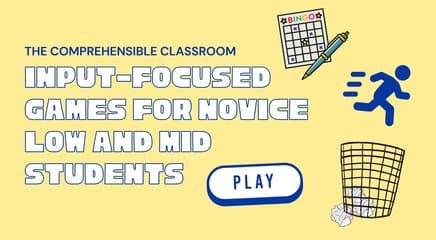One of my favorite strategies for generating interesting discussions based on new vocabulary is having students draw an illustration for a scenario. For example, have the kids draw a picture of somewhere that they went, something that they saw, what they watch on TV, or what they like. These illustration-based discussions are great for providing compelling, comprehensible input to students because they personalize the structures. Here are several strategies for extending the activities beyond the actual discussion:
- Type up a summary of the class discussion. Distribute it to students or project it and ask them questions about it.
- Collect the papers and write one or two statements about each one--statements that include the structure(s) that you are trying to practice (ex: Maria fue a la playa.) Then, project the statements or print them out on a worksheet for students. Number the illustrated papers and post them around the room. Then, have students walk around the room and write down the number of the illustration that corresponds to each statement.
- Ask questions to students about specific papers. This could be orally by projecting the illustrations on a document camera and asking a question about it aloud, or you could do it in writing by posting the pictures around the room with questions written on an index card beside them.
- Divide the information from several illustrations into various chunks (ex: Maria fue a la playa / con su familia / el sábado). Write each chunk in a different box of a grid, all scrambled up. Give copies of the grid to students, and have them cut apart the grids. Students must match up the chunks that go together based on what they remember from the class discussion. You could extend this activity by having them create new stories by arranging the chunks in new ways--you could even use it as a grammar moment to talk about why some things work together while others don't (subject/verb agreement, for example).
- Use them for a listening assessment such as Julia suggested here.
- Use them to create a bulletin board bar graph.
OUTPUT ACTIVITIES:
- Have students compare and contrast two illustrations.
- Have students write about the illustrations. They can write explicit information or they can write backstories, more details, their opinion of it, etc.
- Have students share their illustrations with classmates. You could use simultaneous presentations or any number of Kagan strategies.
*Remember that students should not be forced to do free output until they have had LOTS of input! If you want them to produce correct output, they must have first correctly acquired the structures through loads of correct, comprehensible input.
What are some ways that you use student illustrations?




